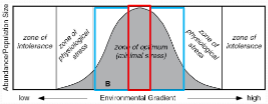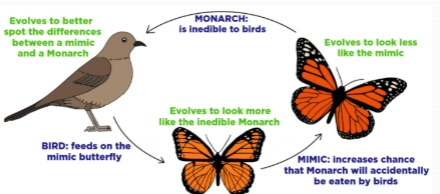GEOG178 - Species Interactions in Biological Communities
1/23
There's no tags or description
Looks like no tags are added yet.
Name | Mastery | Learn | Test | Matching | Spaced |
|---|
No study sessions yet.
24 Terms
Organism
An individual living entity that can react to stimuli, reproduce, and adapt to the environment, including plants, animals, fungi, and microorganisms.
Species
A group of organisms that can interbreed and produce fertile offspring, sharing common characteristics and genetics.
Population
A group of individuals of the same species living in a specific area, capable of interbreeding and sharing resources.
Community
A collection of different populations of various species living and interacting in a specific area, forming a complex network of relationships.
Intraspecific Competition
Competition among individuals of the same species for limited resources such as food, space, and mates.
Ferns and bromeliads competing for space and sunlight.
Jackal and hyenas competing for animal carcass.

Predation
A biological interaction where one organism, the predator, hunts and feeds on another organism, the prey, impacting population dynamics.
Predator and Prey
The relationship between two organisms in which one organism kills and eats another organism, influencing the population sizes of both species.
Effects the entire of both species’ life cycle and adjustment in behavior and body characteristics.
Barnacle larvae —> consumed by fish
Adult barnacle —> consumed by whelk

Cryptic Coloration
A survival adaptation where an organism's coloration helps it blend into its environment, making it less visible to predators or prey.
Mimicry
A survival strategy where one organism resembles another organism or object to gain an advantage, such as avoiding predation or attracting prey.
Predator-Mediated Competition
A form of competition where the presence of a predator affects the competitive dynamics between prey species, often allowing less competitive species to thrive by reducing the population of dominant competitors.
Superior competitor builds a large population.
Predators increase its hunting pressure on superior competitors.
Superior competitor’s population reduce allowing weaker competitor to better compete and increase its population
Symbiosis
a close and often long-term interaction between two different species, which can be mutualistic, commensalistic, or parasitic.
Mutualism
a type of symbiotic relationship where both species benefit from the interaction, enhancing survival and reproduction for each.
Lichen (fungus and alga)
Red-billed oxpecker and impala
Commensalism
a type of symbiotic relationship where one species benefits while the other is neither helped nor harmed.
Bromeliad and tropical tree
Whale barnacle attached to the skin of a baleen whale
Parasitism
a type of symbiotic relationship where one species benefits at the expense of the other, often harming the host.
Keystone Species
A species that has a disproportionately large effect on its environment relative to its abundance, often maintaining the structure of the ecological community.
Ants, predatory starfish, fig tree, gopher tortoise, etc.
Constancy
the degree to which a community maintains its structure and function over time despite environmental changes, often reflecting stability in species interactions.
Inertia
The resistance of a community to change or disturbance, maintaining its structure and function over time.
Renewal
The process by which an ecological community recovers and rebuilds its structure and function after a disturbance or change, often involving the re-establishment of species and interactions.